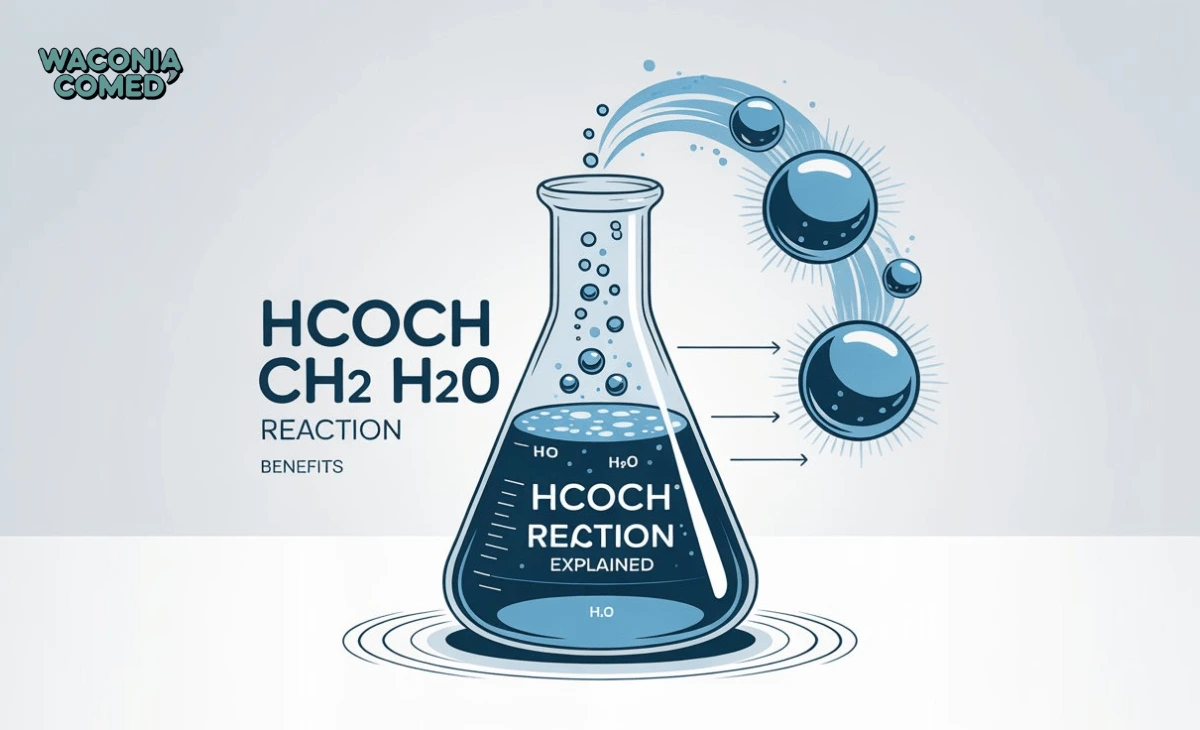Chemistry is the art of transformation, where even the smallest molecules tell great stories. The query hcooch ch2 h2o often comes from learners, researchers, or professionals who want to understand how methyl formate interacts with water, what products are formed, and why this reaction is significant. At first glance, it may look like just another ester hydrolysis reaction, but in reality, it underpins important industrial processes, offers educational value, and illustrates key principles of organic chemistry. By understanding this reaction deeply, one gains insights into both laboratory and real-world chemical behavior.
What is hcooch ch2 h2o?
The notation hcooch ch2 h2o represents the hydrolysis of methyl formate with water. When this ester reacts with water, it breaks down into two simpler but highly useful compounds formic acid and methanol. This is a classic example of ester hydrolysis, which is central to organic chemistry. In its simplest form, the reaction can be written as:
HCOOCH3 + H2O → HCOOH + CH3OH
Here, methyl formate (HCOOCH3) reacts with water to give formic acid (HCOOH) and methanol (CH3OH). This transformation illustrates how esters can be decomposed into their parent alcohols and acids.
You might also like : Class-30x.us Educational Guide
Why the hcooch ch2 h2o Reaction is Important
This reaction is important on many levels. In industry, it helps in the large-scale production of methanol, a compound used in fuels, solvents, and as a feedstock for countless chemicals. In agriculture, the formic acid produced finds use as a preservative and antibacterial agent. From an educational perspective, this reaction is one of the simplest illustrations of ester hydrolysis, making it a popular teaching example in chemistry courses. For researchers, understanding the subtleties of this reaction provides a basis for designing similar transformations in drug development and material science.
The Mechanism of hcooch ch2 h2o
The reaction can proceed through two different mechanisms, depending on the conditions used. Under acidic conditions, the ester oxygen is protonated, which makes the carbonyl carbon more susceptible to attack by water. A tetrahedral intermediate forms, which then breaks down into formic acid and methanol.
Under basic conditions, also called saponification, the hydroxide ion directly attacks the carbonyl carbon of the ester, forming a similar tetrahedral intermediate. The methanol is then released, and the resulting formate ion can be protonated to give formic acid. Both pathways lead to the same end products, though the base-catalyzed process is often more efficient for industrial applications.
Applications of the hcooch ch2 h2o Reaction
The applications of this reaction go beyond the laboratory. Methanol produced from ester hydrolysis is widely used as a raw material in the manufacture of formaldehyde, acetic acid, and even biodiesel. It also serves as a clean-burning alternative fuel. Formic acid, on the other hand, is important in textile processing, rubber production, and as a preservative in animal feed. Because of its antibacterial properties, it also finds application in agriculture to prevent spoilage of silage.
In the pharmaceutical industry, similar hydrolysis reactions are used to modify ester-based drugs so they can be better absorbed in the human body. Thus, the study of hcooch ch2 h2o provides a foundation for understanding how drugs behave inside living systems.
Challenges in the Reaction Process
While the products are highly useful, performing this reaction is not without challenges. The volatility and toxicity of methanol require careful handling in both laboratory and industrial setups. Controlling the reaction conditions to maximize yield is also a challenge, since competing side reactions may occur. Maintaining the correct acidity or alkalinity of the solution is crucial, and temperature control is often necessary to prevent unwanted decomposition of the products.
Step-by-Step Understanding of the Process
To carry out the hydrolysis, one typically begins with purified methyl formate. This compound is mixed with water, and a catalyst such as hydrochloric acid or sodium hydroxide is introduced to initiate the process. Gentle heating may be applied to speed up the reaction, though excessive heat must be avoided. The progress of the reaction can be monitored using analytical techniques like titration or infrared spectroscopy. Once complete, the mixture contains formic acid and methanol, which can then be separated through distillation or extraction, depending on the purpose of the experiment.
Educational Value of hcooch ch2 h2o
In classrooms, this reaction serves as a straightforward model to explain the behavior of esters. It allows students to visualize how nucleophiles attack electrophilic carbonyl carbons, how intermediates form, and how bonds break and reform. Teachers often use it as a stepping stone to explain more complex biochemical hydrolysis reactions, such as those involving fats and proteins. Understanding this simple system equips learners with the skills to analyze and predict the outcomes of more complicated transformations.
Future Prospects of This Reaction
With the growing demand for sustainable chemicals and green energy sources, the study of reactions like hcooch ch2 h2o is gaining more attention. Methanol is being considered as a clean fuel for vehicles and power generation, while formic acid shows promise in hydrogen storage technologies. These applications suggest that what once seemed like a simple laboratory reaction could play a much larger role in future energy and environmental solutions.
FAQs about hcooch ch2 h2o
What does hcooch ch2 h2o represent?
It represents the hydrolysis of methyl formate with water, producing formic acid and methanol.
Is this reaction acid or base catalyzed?
It can proceed under both acid-catalyzed and base-catalyzed conditions, though the mechanisms differ slightly.
Why is the reaction important in industry?
It provides methanol and formic acid, both of which are essential in fuel, agriculture, textiles, and pharmaceuticals.
Can this reaction occur naturally?
Yes, ester hydrolysis can occur in biological systems, though it usually requires enzymes rather than acids or bases.
Is the reaction safe to perform in a laboratory?
It can be, provided proper precautions are taken, especially since methanol is toxic and flammable.
How does this reaction connect to green chemistry?
The products, especially methanol and formic acid, are studied as sustainable fuels and eco-friendly industrial chemicals.
You might also like : Empowering Education Through Global Teaching Labs
Conclusion
The hcooch ch2 h2o reaction, while seemingly simple, holds remarkable value in chemistry, industry, and education. By producing formic acid and methanol, it bridges classroom theory with real-world applications that touch pharmaceuticals, energy, agriculture, and beyond. Understanding its mechanism gives us a deeper appreciation of ester hydrolysis and its role in organic transformations. For students, it offers clarity. For industries, it offers opportunities. And for the future, it promises pathways to sustainability.
If you are passionate about exploring the fascinating world of chemistry, start by revisiting foundational reactions like this one: they are the stepping stones to innovation.

